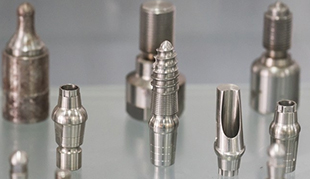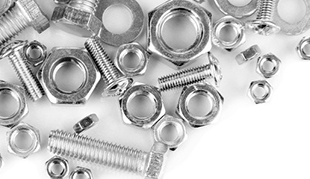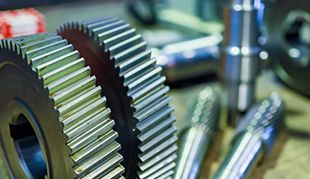Metal Injection Molding (MIM): Revolutionizing Precision Manufacturing
One such groundbreaking technique that has gained popularity in recent years is Metal Injection Molding (MIM). This innovative process combines the flexibility of plastic injection molding with the strength and durability of metals, resulting in complex and intricately designed metal components. In this blog, we will explore the ins and outs of Metal Injection Molding and how it is revolutionizing precision manufacturing.
1.Understanding Metal Injection Molding (MIM)
Metal Injection Molding is a manufacturing process that utilizes a blend of fine metal powders and binders to create intricate metal parts through injection molding techniques. The process begins with the preparation of a feedstock by mixing metal powders, typically stainless steel, nickel, or other metal alloys, with a thermoplastic binder. This mixture is then granulated into small pellets, which are fed into an injection molding machine.

2.The MIM Process in Action
Once inside the injection molding machine, the feedstock is heated to a semi-liquid state, allowing it to flow into the mold cavity under high pressure. The mold is designed to replicate the intricate details of the desired component accurately. After the injection stage, the part is left to cool and solidify, after which it is ejected from the mold. At this stage, the part is known as the "green part."
3.Debinding
After the injection molding process, the green part still contains the thermoplastic binder. To remove the binder and obtain a part with high metal content, a debinding step is carried out. There are various debinding techniques available, including solvent debinding, thermal debinding, and catalytic debinding. This step is crucial in maintaining the structural integrity of the final component.
4.Sintering
Following debinding, the green part is subjected to a high-temperature sintering process in a controlled atmosphere. During sintering, the metal particles fuse together, resulting in a significant increase in the component's density and mechanical properties. The part shrinks during sintering, and the final dimensions are closely controlled to account for this shrinkage.
5.Achieving Complexity and Precision
One of the main advantages of MIM is its ability to produce highly complex parts with exceptional precision. Traditional manufacturing methods, such as CNC machining and metal forming, may struggle with intricate geometries. MIM, on the other hand, can achieve features like thin walls, fine details, and undercuts, enabling designers to push the boundaries of what's possible.
6.Material Selection and Applications
MIM can utilize a wide range of metal alloys, including stainless steel, nickel-based alloys, cobalt-chromium, and more. This versatility allows MIM to cater to diverse industries such as automotive, aerospace, medical, consumer electronics, and firearms manufacturing. Components produced through MIM often find applications in gears, surgical instruments, firearm triggers, and smartphone hinges, among others.

7.Advantages of MIM
A. Complex geometries: MIM allows for the production of intricate shapes and features, reducing the need for secondary operations.
B. Cost-effective: MIM can be more economical than traditional machining, especially for high-volume production.
C. High material utilization: The MIM process minimizes material waste, contributing to cost efficiency.
D. Superior mechanical properties: Sintered MIM parts exhibit excellent strength, hardness, and wear resistance.
E. Reduced assembly requirements: MIM can consolidate multiple parts into a single component, streamlining assembly processes.
Metal Injection Molding has emerged as a game-changing technology in the world of precision manufacturing. Its ability to produce complex metal components with exceptional accuracy and cost-effectiveness has made it a popular choice across various industries. As technology continues to advance, MIM is expected to push the boundaries further, opening up new possibilities in design and engineering. With its versatility and potential for innovation, Metal Injection Molding is indeed revolutionizing the way we manufacture precision metal parts.






